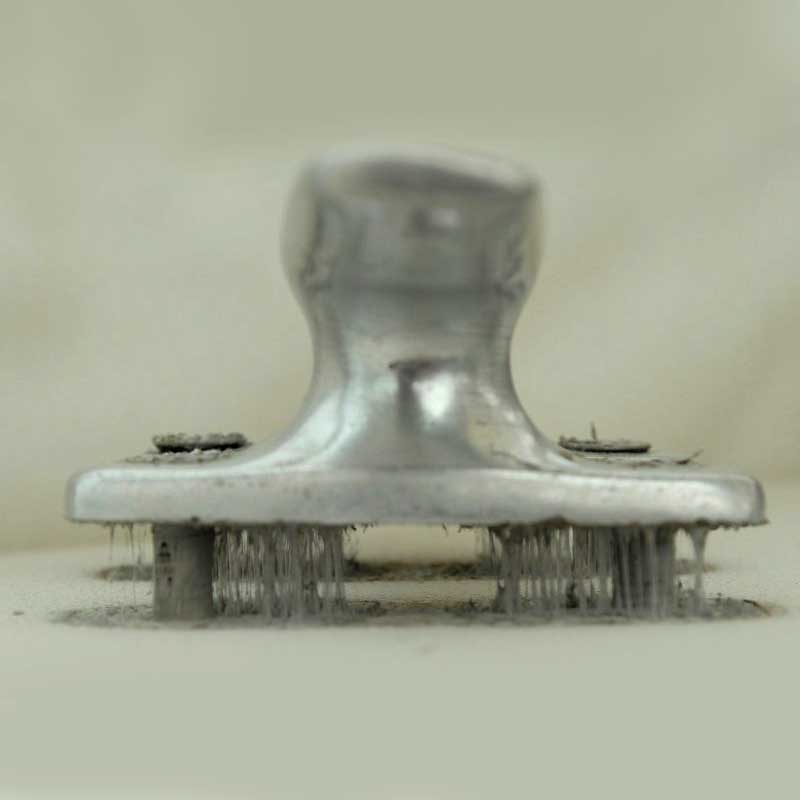To all Hunter B&R lovers out there, if you are a hater please just keep your thoughts to yourself. I have owned a 2001 Hunter 380 for about 18 months and last weekend I noticed that the chainplate adaptor on top of the deck was separating from the deck itself.
There are 2 5/15 bolts that secure this piece and absolutely no access down below. I removed one of the bolts and it had about a full inch of thread engagement and some signs of wear on the portion that was in contact with the thru hole in the adaptor plate(picture attached). I place a new bolt with the added 3M 5200 sealant. Has anyone seen this condition before ? Is it an actual problem ? Does anyone have a sketch or print showing how the chainplate is attached to the adaptor ?

There are 2 5/15 bolts that secure this piece and absolutely no access down below. I removed one of the bolts and it had about a full inch of thread engagement and some signs of wear on the portion that was in contact with the thru hole in the adaptor plate(picture attached). I place a new bolt with the added 3M 5200 sealant. Has anyone seen this condition before ? Is it an actual problem ? Does anyone have a sketch or print showing how the chainplate is attached to the adaptor ?












